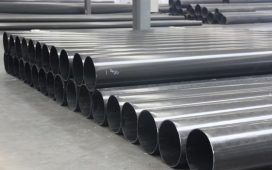Almost every kind of job has safety risks of one kind or the other. This statement holds true especially for people who work at heights. When we talk about working at heights, one occupation that comes to our mind is that of workers who work on towers (it could be anything from telecommunication antenna to aerial signal structure).
The importance of tower climbing and rescue training for such workers cannot be stressed enough. Training consultants like Nouvelle Hauteur can impart the right training required for such people. What do training courses like these cover? Here are few things that you need to know about this kind of training program.
- Tower climbing and rescue training programs generally cover the regulations and standards pertaining to climbing towers. It includes everything from anchorages and body support to means of connection and positioning. By the end of the course, they would know how to select anchorage and rescue components for different victim retrieval and fall possibilities.
- The workers are generally briefed about the potential hazards involved in such occupations, equipment inspections, employee responsibilities, and rescue plan. They will be provided with an insight into the right techniques to follow, best practices in the industry, and tips to avoid injuries.
- Workers will get to understand the required equipment, procedures, and suspension trauma when the need arises for devising a rescue plan. Such training programs give a fully operational procedure and rescue plan. Many reputed agencies also conduct mock trials of tower rescue operations. They also get to understand the significance of self-rescue and co-worker rescue.
- Such courses start with the fundamental skills and also include practical classes and testing based on the industry standards pertaining to tower climbing, fall protection, and rescue plan.
- During this training, workers can gain knowledge about rescue system components and equipment. They develop the capability to react properly in emergency situations apart from learning rescue methods apt for tower work. They understand how to use safety connections, harnesses, and anchorage adapted specifically for tower work and rescue.
With this training program becoming a standard across Canada, it has become mandatory for companies to get workers trained in these areas. Climbing towers is a highly risky job and working at such heights obviously mandates such useful training courses for the employees. It’s important to tie up with training agencies that train with a practical focus.







